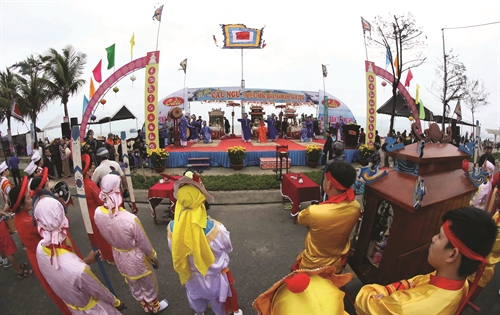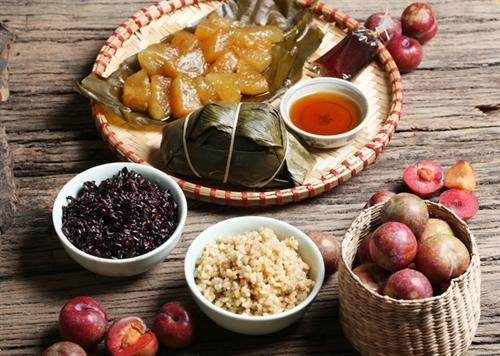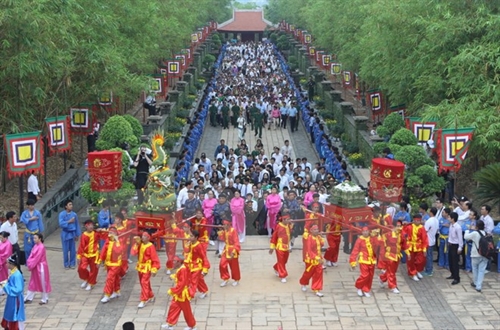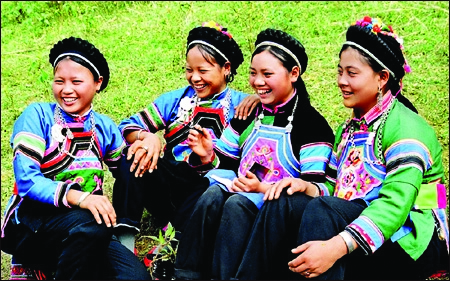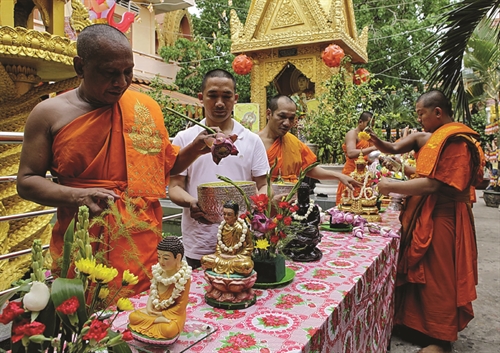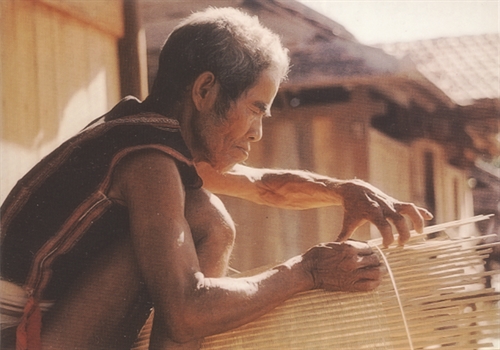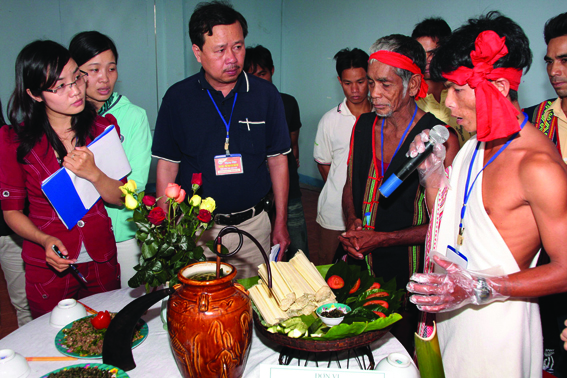>>The Tho
>>"Tho" ethnos - Its customs, practices and folk laws
Ta Thi Tam
Ethnology Institute
Living on rice cultivation in mountainous areas of Thanh Hoa and Nghe An central provinces, the Tho have various ceremonies dedicated to rice - the plant playing a special role in the spiritual life of the group.
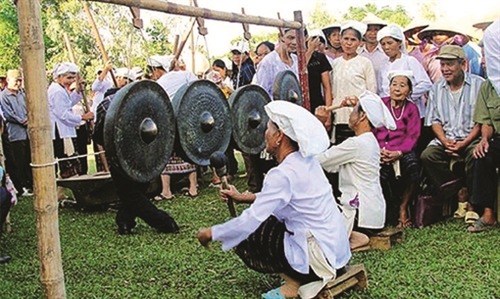 |
| Cultural activities in the Great Unity Festival of Tho people in Nghia Xuan commune, Quy Hop district, Nghe An province__Photo: Internet |
The Tho usually clear land for rice cultivation for between two and four crops then move to another place. Their traditional farming method is pricking holes in the earth for sowing, in which three people prick holes with a stick followed by seven others (usually women) sowing rice seeds. So the first important farming ritual is the sowing ceremony which seeks the god of earth’s protection of the crop from pests and wild animals. The ceremony is held in the fourth month of the lunar year before a crop starts. The date of the ceremony is chosen carefully and must not fall on the day of the rooster or rat, which is believed to bring in a poor harvest since these two animals destroy crops.
To prepare for the ceremony, a Tho family makes a tray of offerings, including a rooster, a dish of steamed sticky rice, a bottle of alcohol, a pair of chopsticks, a bowl, three betel leaves, three or five pieces of dry areca nut, a cup of water, votive papers and incense.
The ceremony is conducted by the village shaman in the field in the presence of the family members. Putting incense sticks onto the offering tray placed in the middle of the field, the shaman starts praying, inviting the god of earth to enjoy the offerings and asking for his permission for the family to sow seeds as well as for his protection of the crop from wild animals and pests. The prayers also include a promise to make offerings to the god right after the family harvests the crop. After the praying formality, the family owner burns votive papers and shares the offerings with the shaman and other family members right in the field. Only after this ceremony, the Tho start sowing seeds for a crop.
When the rice fields turn beautifully yellow, the Tho conduct a ritual devoted to the rice spirit before harvesting the crop. In this simple ceremony, the family owner visits the field, picks up three or five most beautiful rice ears and brings them home. The rice is hung next to the ancestor altar or at the highest place in the house. This formality symbolizes the escort of the rice spirit home for a rest before a new crop begins.
After harvesting the crop, the Tho keep their promise with the god of earth by conducting a thanksgiving ceremony to show their gratitude to the god’s support for a bumper crop. The ceremony is also held in the field just like the sowing ceremony with the same offerings. This time, the shaman thanks the god for his good care of the crop which allows the family to gain a bumper harvest and again prays for his support for the next crop. The family owner then burns votive papers before family members and the shaman have the offerings together in the field.
 |
| The Tho in Nghe An province__Photo: Internet |
After the harvest, another important ceremony is held to revere the newly harvested rice. The new rice ceremony also gives the Tho a chance to show their respect for their ancestors by offering them the new rice. The Tho believe eating the newly harvested rice before offering it to their ancestors is a disrespect.
Offerings of the new rice ceremony include those for the sowing ceremony plus a bowl of the newly harvested rice and a dish of fish. This ceremony is conducted by the village shaman or by the family owner if he is conversant with praying formalities. After the family owner places the offering tray onto the altar and burns incense, the shaman prays to invite family ancestors to taste the new rice with their descendents and plead for their support for a better crop next year. The shaman then offers alcohol to the ancestors by pouring it into empty cups on the tray. After that he casts coins to see if the family can gain a better crop next year. The ceremony closes with all family members sharing the new rice together. During harvest time, the shaman is the busiest person as he conducts the new rice ceremony for almost all families in the village. After he finishes the ceremony, families often give the shaman some sticky rice and meat to bring home as a gift.
The Tho also have a ritual dedicated to the buffalo spirit. The ceremony, which is held on the fourth day of the lunar new year festival, shows the Tho’s care for the helpful animal of their farm work. The most important offering of the ceremony is fish, to be offered to the god of river who is believed to protect buffalos when they bathe in the river. Other offerings include banh tet (boiled sticky rice cake wrapped in banana leaves), banh dau cho (dog head-shaped sticky rice cake), brown-sugar cake, a bowl of salt, a bowl of ordinary or sticky rice, a bottle of alcohol, three or five pieces of areca nut and betel leaves, a cup of water and votive papers. The offering tray is placed next to the buffalo stable. After the shaman recites prayers which praise the buffalo’s help for the family’s farming, the family owner feeds the buffalo with the cake covered in brown sugar and salt.-
